Find Help
More Items From Ergsy search
-
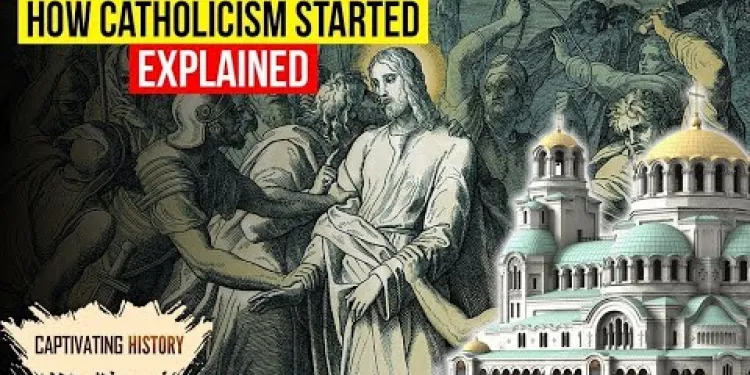
How Did Catholicism Start?
Relevance: 100%
-
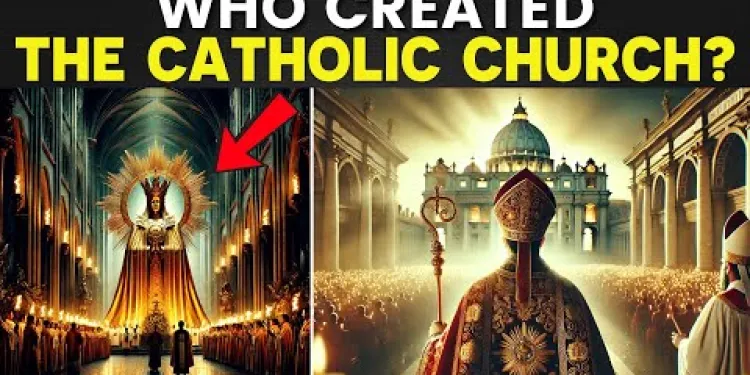
The True History of the Catholic Church That No One Told You
Relevance: 62%
-
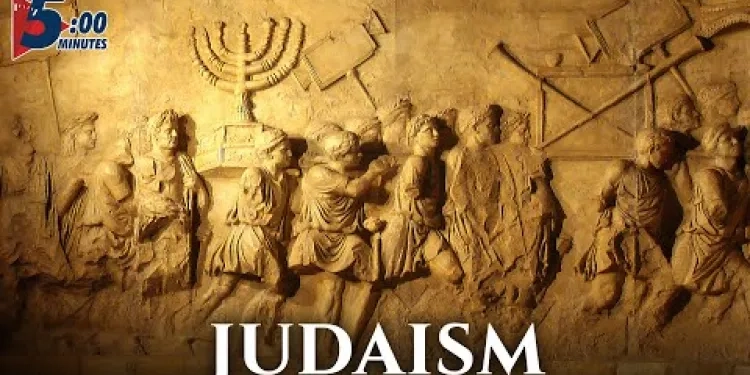
Origin of Judaism - A Brief History | 5 MINUTES
Relevance: 46%
-
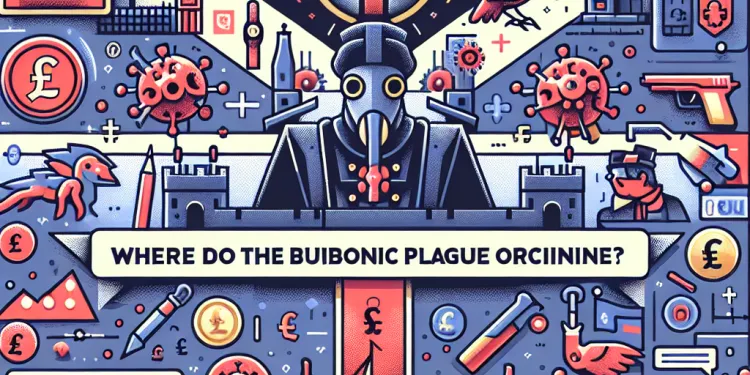
Where did the bubonic plague originate?
Relevance: 45%
-

A History of The Church of England
Relevance: 42%
-

What are Healthy Start vouchers in the UK?
Relevance: 33%
-

What are Healthy Start vouchers?
Relevance: 33%
-

What is the Sure Start Grant?
Relevance: 33%
-

What is the Sure Start Grant in the UK?
Relevance: 33%
-

What is the Sure Start Grant?
Relevance: 33%
-

What are Healthy Start vouchers?
Relevance: 32%
-

History of the Church of England
Relevance: 31%
-

What is the Sure Start Maternity Grant?
Relevance: 31%
-
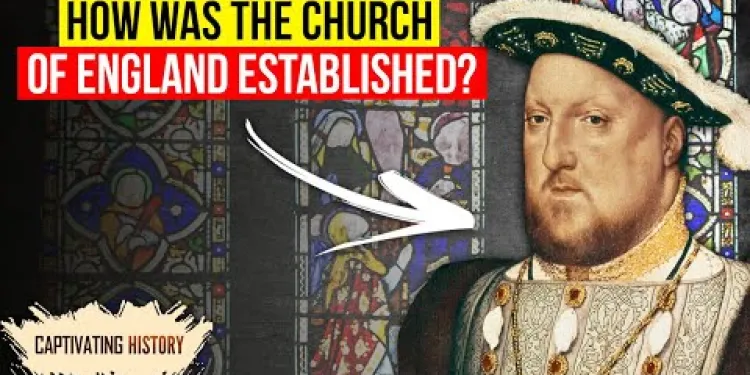
How Was the Church of England Established
Relevance: 31%
-
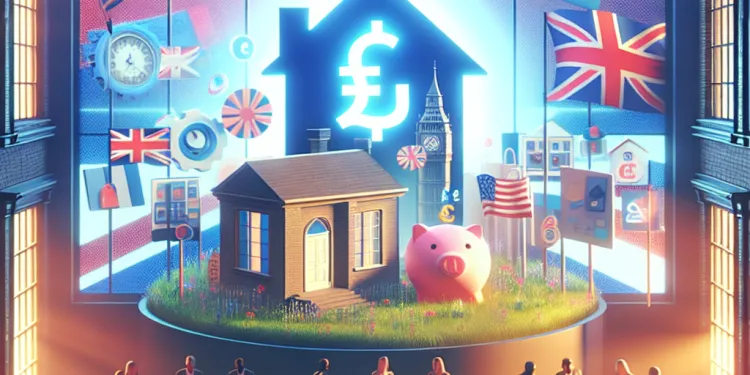
Who is eligible for the Sure Start Grant?
Relevance: 31%
-
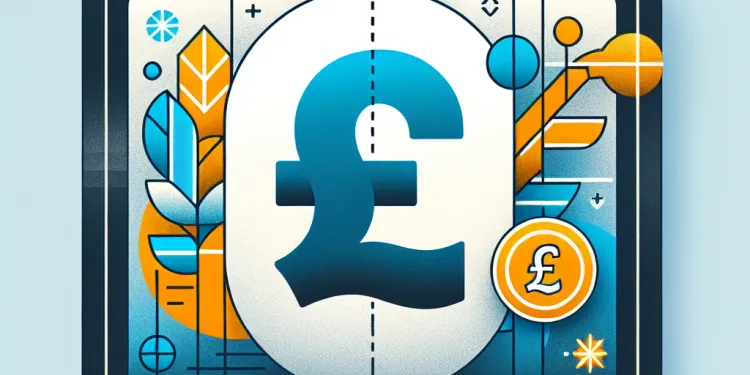
Who is eligible for Healthy Start vouchers?
Relevance: 31%
-

Who is eligible for the Sure Start Grant?
Relevance: 31%
-

What is the Sure Start Maternity Grant?
Relevance: 31%
-

Who is eligible for Healthy Start vouchers?
Relevance: 30%
-

The history of the Baptist Church and Anabaptist: The Good The Bad and the Ugly
Relevance: 30%
-

How can I apply for Healthy Start vouchers?
Relevance: 30%
-

What can I buy with Healthy Start vouchers?
Relevance: 30%
-

How can I apply for Healthy Start vouchers?
Relevance: 30%
-
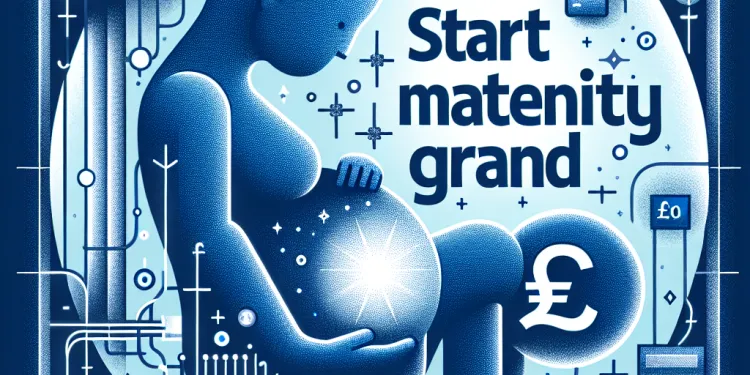
How much is the Sure Start Maternity Grant?
Relevance: 30%
-

How much is the Sure Start Maternity Grant?
Relevance: 30%
-

How much is the Sure Start Maternity Grant?
Relevance: 29%
-
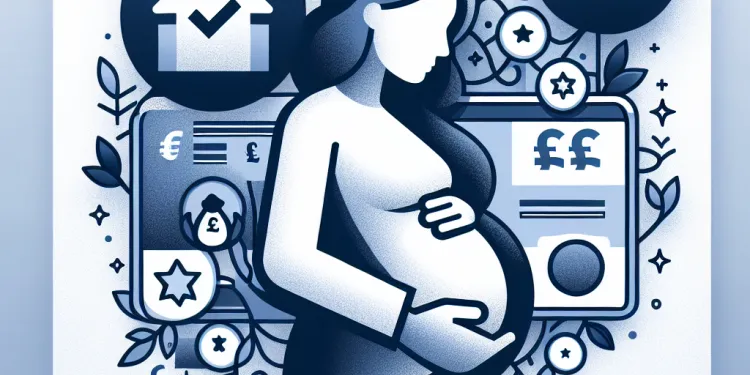
Who is eligible for the Sure Start Maternity Grant?
Relevance: 29%
-

Is there a minimum age requirement to start nurse training?
Relevance: 28%
-
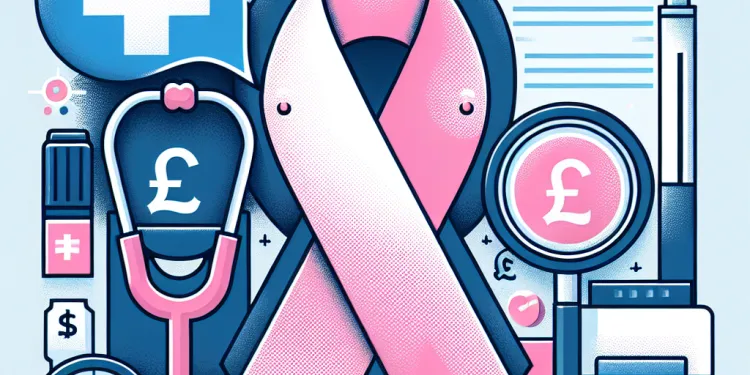
At what age should I start having mammograms?
Relevance: 28%
-
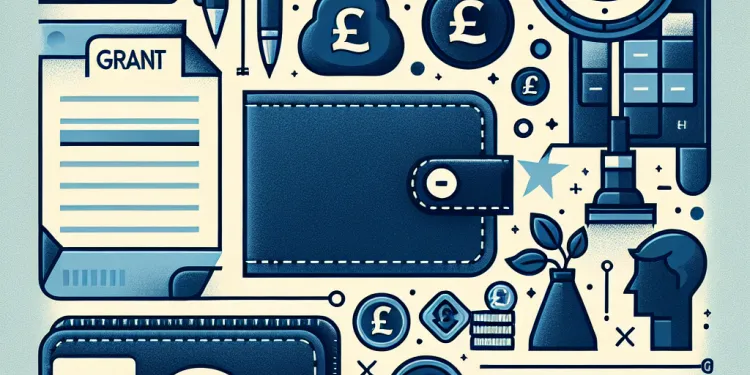
How much money can I receive from the Sure Start Grant?
Relevance: 26%
-
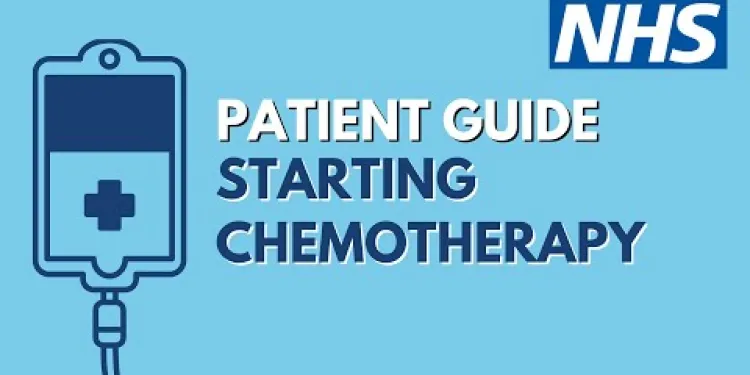
Starting Chemotherapy
Relevance: 26%
-

How much money can I receive from the Sure Start Grant?
Relevance: 26%
-

Is it necessary to stop conventional treatment when starting homeopathy?
Relevance: 25%
-

What age is appropriate to start learning first aid?
Relevance: 24%
-
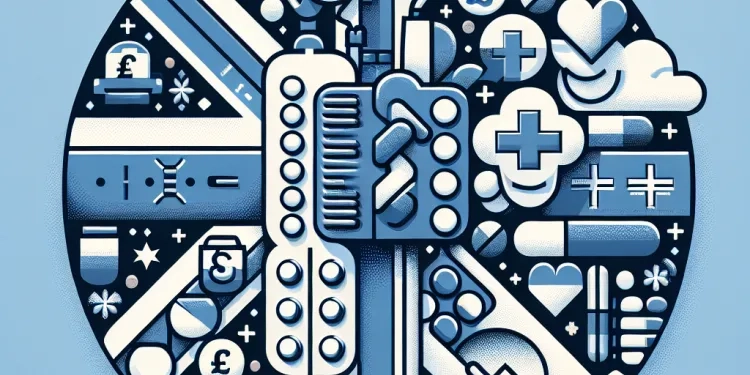
What should I tell my healthcare provider before starting Wegovy?
Relevance: 23%
-

When can I apply for the Sure Start Grant?
Relevance: 23%
-
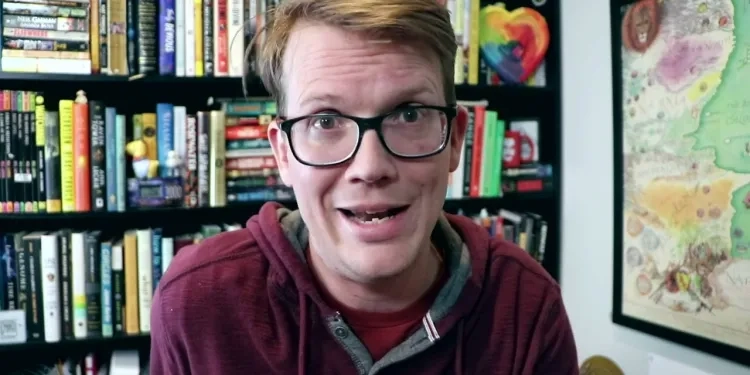
UNDERSTANDING YOUR STUDENT LOAN: A GUIDE FOR ENGLISH STUDENTS STARTING AN UNDERGRADUATE COURSE 2023
Relevance: 22%
-
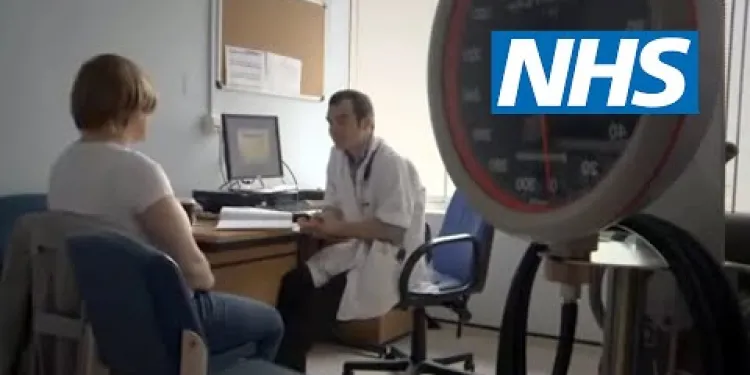
What should I do if I start bleeding during early pregnancy? | NHS
Relevance: 22%
-

What should I discuss with my doctor before starting Ozempic?
Relevance: 21%
-
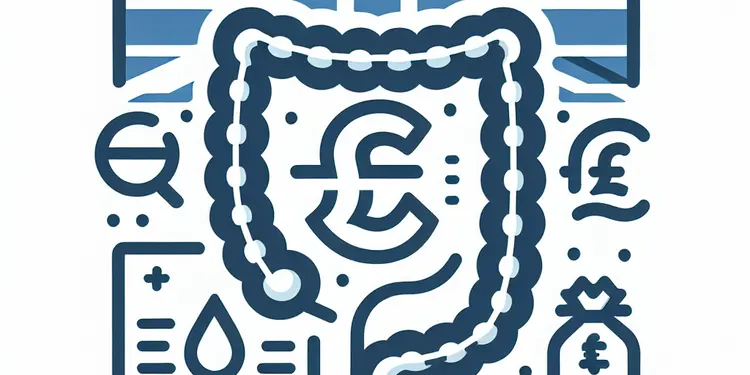
At what age should I start testing myself for colorectal cancer?
Relevance: 21%
The Beginnings of Catholicism
Catholicism, the oldest and largest branch of Christianity, traces its origins back to the teachings of Jesus Christ in the first century AD. As its influence spread across Europe, it became deeply intertwined with the historical and cultural fabric of many countries, including the United Kingdom. To understand how Catholicism began, we must explore its early development and spread.
The Life and Teachings of Jesus Christ
Jesus of Nazareth, whose life and teachings form the foundation of Catholicism, was born in Bethlehem around 4 BC. Preaching in the Roman province of Judea, his message of love, forgiveness, and salvation attracted a devoted following. His crucifixion, believed to be followed by his resurrection, became the central event of Christianity. The Apostles, tasked with spreading his message, set the stage for what would become the global Church.
The Apostolic Age
The Apostolic Age, spanning from about 33 AD to 100 AD, saw the establishment of early Christian communities in regions such as the Eastern Mediterranean and Rome itself. St. Peter and St. Paul, key figures among the apostles, played pivotal roles. Tradition holds that St. Peter became the first bishop of Rome, laying the foundation for the Papacy. Their missionary work, amidst persecution from Roman authorities, helped to plant the seeds of Catholicism.
Expansion through the Roman Empire
Initially practiced in secret, Christianity gained legal status under Emperor Constantine with the Edict of Milan in 313 AD, eventually becoming the state religion of the Roman Empire by the end of the fourth century. This newfound legitimacy allowed Catholicism to flourish, spreading rapidly across Europe. It developed a structured hierarchy, with the Bishop of Rome (the Pope) as its ultimate earthly authority, guiding doctrine and maintaining unity.
Catholicism in the United Kingdom
The introduction of Christianity to the British Isles is credited to Roman influence and later missionary efforts, notably by St. Augustine of Canterbury in 597 AD, who was sent by Pope Gregory the Great. This initiative led to the establishment of significant religious sites and the gradual conversion of local rulers and their subjects. While the Reformation in the 16th century brought significant changes, Catholicism remains a vital part of the UK’s religious landscape today.
Conclusion
Catholicism’s journey from a small group of disciples to a global religious force is deeply interwoven with history. In the United Kingdom, its legacy is evident in its institutions, architecture, and cultural heritage. Whether through its early origins or its enduring presence, Catholicism continues to play a significant role in shaping societies. Understanding its beginnings offers valuable insights into a tradition that has profoundly influenced Western civilization.
The Origins of Catholicism
Catholicism, one of the oldest and largest branches of Christianity, traces its roots back to the beginnings of Christianity itself. The Catholic Church considers itself the continuation of the early Christian community established by Jesus Christ and his apostles. This deep historical tradition is central to the Church's identity and has played a significant role in the religious and cultural history of the Western world, including the United Kingdom.
Foundations in the Life of Jesus and the Apostles
The history of Catholicism begins with Jesus Christ, a Jewish teacher and healer who was born around 4 BC in Bethlehem. According to Christian belief, Jesus is the Son of God and his teachings form the foundation of the faith. Jesus gathered a group of disciples and chose twelve apostles to spread his message. Following his crucifixion and resurrection, these apostles continued to preach his teachings, laying the groundwork for the Christian Church.
The Early Christian Church
After Jesus's resurrection, the apostles set out to spread his teachings throughout the Roman Empire. Peter, one of Jesus's closest followers, traveled to Rome, where he became a key figure in establishing the Church. The community in Rome grew in prominence, and the bishop of Rome, considered Peter's successor, eventually became acknowledged as the Pope. This established the foundation for what would become the Roman Catholic Church.
Acceptance and Expansion
Catholicism expanded significantly after the Edict of Milan in 313 AD, which granted religious freedom throughout the Roman Empire and was issued by Emperor Constantine I. By the end of the fourth century, Christianity had become the official religion of the Roman Empire. The Church developed its hierarchical structure, doctrine, and practices during this period, establishing many traditions that are still observed today.
Catholicism in the United Kingdom
Catholicism reached the British Isles through missionaries such as Augustine of Canterbury, who arrived in the late 6th century to convert the Anglo-Saxons. Over time, Catholicism became a dominant force in Britain, influencing its culture and governance. Even after the Protestant Reformation and the establishment of the Church of England in the 16th century, Catholicism has remained an important religious tradition in the UK, enduring periods of persecution and resurgence.
Understanding the origins of Catholicism provides insight into its profound impact on culture, history, and religious life throughout the centuries, both globally and within the United Kingdom.
The Start of Catholicism
Catholicism is a very old part of Christianity. It began with Jesus Christ’s teachings a long time ago. As it spread across Europe, it became a big part of many countries, like the United Kingdom. To understand how Catholicism started, we need to look at its early days and how it spread.
The Life of Jesus Christ
Jesus, who started Catholicism, was born in a place called Bethlehem. He talked about love, forgiveness, and being saved. Many people followed him. After he died, people believed he came back to life. This is a very important part of Christianity. The Apostles, Jesus’s closest friends, shared his message everywhere. This helped start the Church.
The Time of the Apostles
From about 33 AD to 100 AD, small Christian groups started in places like the Eastern Mediterranean and Rome. St. Peter and St. Paul were very important during this time. St. Peter became the first bishop of Rome, which was the start of having a Pope. Even though the Romans did not like Christians at first, the work of apostles helped Catholicism grow.
Growing in the Roman Empire
At first, Christians had to meet in secret. But in 313 AD, Emperor Constantine made Christianity legal. By the end of the fourth century, it became the main religion of the Roman Empire. Catholicism spread quickly across Europe. It got organized, with the Pope in charge. This helped keep everyone working together.
Catholicism in the United Kingdom
Christianity came to the British Isles partly because of the Romans and people like St. Augustine of Canterbury. He came to England in 597 AD, sent by Pope Gregory the Great. This led to building important churches and many people becoming Christians. Even though big changes happened in the 16th century, Catholicism is still important in the UK today.
Conclusion
Catholicism started with a small group and became a large part of history. In the United Kingdom, its influence can be seen in old buildings and churches. Understanding how it started helps us see how it changed Western culture.
Help with reading: Try reading one paragraph at a time. Use tools like text-to-speech if you find it hard to read. You can also look up words you don't know in a simple dictionary.
The Beginnings of Catholicism
Catholicism is one of the oldest parts of Christianity. It started when Christianity began. The Catholic Church says it continues what Jesus Christ and his friends, called apostles, started. This long history is very important to the Church. Catholicism has been important in the history of the Western world, including places like the United Kingdom.
Jesus and His Friends, the Apostles
The story of Catholicism starts with Jesus Christ. He was a special teacher and healer who was born a long time ago, around 4 BC, in a place called Bethlehem. Christians believe that Jesus is the Son of God. What Jesus taught is the base of the Christian faith. Jesus had a group of friends called disciples, and he chose twelve special ones called apostles to share his message. After Jesus died and came back to life, these apostles continued to teach what Jesus taught. This started the Christian Church.
The First Christian Church
After Jesus came back to life, his apostles started to spread his message all over. One of these apostles, called Peter, went to Rome. He helped start the Church there. The Church in Rome became very important. The leader of this Church, who was seen as following Peter, was called the Pope. This is how the Roman Catholic Church began.
Growth and Change
Catholicism grew a lot after a special rule called the Edict of Milan in 313 AD. This rule, made by Emperor Constantine I, said people could believe what they wanted in the Roman Empire. By the end of the fourth century, Christianity was the main religion there. The Church set up many rules and traditions during this time, many of which are still followed today.
Catholicism in the United Kingdom
Catholicism came to the British Isles when people like Augustine of Canterbury arrived in the late 6th century. They wanted to teach the Anglo-Saxons about Christianity. Over time, Catholicism became very important in Britain. It affected how people lived and what they believed. Even after changes like the Protestant Reformation, Catholicism stayed important in the UK. Sometimes it was hard for Catholics because of persecution, but their community stayed strong.
Learning about where Catholicism comes from helps us understand how it has been important to the culture, history, and the way people live. This is true around the world and in places like the United Kingdom too.
Frequently Asked Questions
How did Catholicism start?
Catholicism traces its beginnings to the time of Jesus Christ in the 1st century AD. The term 'Catholic' means 'universal', and the faith is said to have been founded by Jesus through his apostles, particularly Saint Peter, whom Catholics consider the first Pope.
Who was the first leader of the Catholic Church?
The first leader, or Pope, of the Catholic Church is believed to be Saint Peter, one of Jesus Christ’s apostles.
How did the Catholic Church expand in Europe?
The Catholic Church spread across Europe during the Roman Empire's prominence through missions and conversions spearheaded by apostles and early Christians. The Edict of Milan in 313 AD by Emperor Constantine I allowed Christianity to flourish legally throughout the Roman Empire.
What role did Emperor Constantine play in Catholicism?
Emperor Constantine played a crucial role by legalizing Christianity with the Edict of Milan in 313 AD and later converted to Christianity himself, which helped spread the religion throughout the Roman Empire.
When did Catholicism become distinct from other forms of Christianity?
Catholicism began to emerge as a distinct form of Christianity in the early centuries after Christ, particularly with the establishment of the papacy and the formalization of Church doctrines and practices at councils like Nicaea in 325 AD.
What is the importance of the Council of Nicaea?
The Council of Nicaea, held in 325 AD, was pivotal in establishing foundational Christian doctrines, including the nature of Christ and the formulation of the Nicene Creed, which many Christian denominations still use today.
How did Catholicism reach the United Kingdom?
Catholicism reached the British Isles primarily through Roman colonization and missionary efforts, most notably by Saint Augustine of Canterbury, sent by Pope Gregory the Great in 597 AD to convert the Anglo-Saxons.
What was the Great Schism?
The Great Schism in 1054 AD was the formal split between the Roman Catholic Church in the West and the Orthodox Church in the East, mainly due to disputes over papal authority and various theological differences.
What impact did the Reformation have on Catholicism?
The Reformation in the 16th century was a major challenge to the Catholic Church, as Protestant reformers like Martin Luther sought changes within the Church, leading to significant religious, cultural, and political upheaval and the establishment of Protestant churches.
How did the Catholic Church respond to the Reformation?
In response to the Reformation, the Catholic Church initiated the Counter-Reformation, highlighted by the Council of Trent (1545-1563), which enacted reform of Church practices and clarified doctrines.
What was the significance of the Council of Trent?
The Council of Trent was significant in addressing the challenges posed by the Protestant Reformation, reforming Church practices, reaffirming Catholic doctrines, and standardizing the Mass and sacraments.
Who is the current Pope and what is his role?
The current Pope is Pope Francis, who became the head of the Catholic Church in 2013. His role involves spiritual leadership, defining church doctrines, and guiding Catholics worldwide.
Why is Rome important to Catholics?
Rome is important to Catholics as it is the site of the Vatican, the spiritual and administrative heart of the Catholic Church. It is believed to be where Saint Peter, the first Pope, was martyred and is buried.
What are the main beliefs of Catholicism?
Catholicism's main beliefs include the divinity of Jesus Christ, the authority of the Pope, the significance of the Seven Sacraments, the resurrection of Jesus, and the concept of salvation through faith and good works.
What distinguishes Catholicism from other Christian denominations?
Catholicism is distinguished by its recognition of the Pope's authority, its tradition of seven sacraments, its veneration of Mary and the saints, and the belief in transubstantiation during the Eucharist.
How did the Catholic Church begin?
The Catholic Church began a long time ago. It started after Jesus lived. Jesus had many followers. They spread his teachings.
Their leader was Peter. He was one of Jesus' closest friends. Peter is considered the first Pope. A Pope is the leader of the Catholic Church.
The Church grew over many years. It spread to different countries.
If reading is hard, you can ask someone to read with you. Listening to stories about these events can also help.
Catholicism started a long time ago, when Jesus Christ was alive, over 2000 years ago. The word 'Catholic' means 'for everyone'. People who are Catholic say Jesus began their faith with his friends, called apostles. One apostle, named Saint Peter, is very special. Catholics say he was the first leader, called the Pope.
Who was the first leader of the Catholic Church?
The first leader of the Catholic Church was Peter. He was one of Jesus's friends. Peter helped start the church a long time ago.
To help remember, you can:
- Use pictures of Peter and the church.
- Say Peter's name out loud a few times.
The first leader of the Catholic Church was Saint Peter. He was one of Jesus's special friends, called apostles.
How did the Catholic Church grow in Europe?
The Catholic Church grew big in Europe in different ways. Here’s how:
- The Church sent people called missionaries to teach about their faith.
- Kings and queens helped the Church, and many people became members.
- The Church built many churches where people could pray and learn.
To learn more, you can:
- Read books that tell stories about history.
- Watch videos that explain what happened in the past.
- Ask questions if you need help understanding.
The Catholic Church grew big in Europe when the Roman Empire was strong. This happened because of people called apostles and early Christians who traveled and told others about their beliefs. In 313 AD, a leader named Emperor Constantine I made a new rule called the Edict of Milan. This rule said that people could follow Christianity without getting into trouble, so more people became Christians.
To help understand this, you can use tools like story maps or drawings. These can show how the church spread and who helped make it happen. Practice reading with a friend or family member to make it fun and easier to learn new words.
What did Emperor Constantine do for the Catholic Church?
Emperor Constantine was a leader a long time ago. He did important things for the Catholic Church. This helps us understand how the Church grew and changed.
Here are some simple points to understand his role:
- First Christian Emperor: Constantine was the first leader to follow Christianity. This was a big step for the Church.
- Made Christianity Legal: He made rules that said people could follow Christianity safely. Before this, Christians were often in danger.
- Built Churches: Constantine helped build many important churches. These are places where people can pray and learn about their faith.
- Called Important Meetings: He organized big meetings where Church leaders talked about their beliefs and agreed on important ideas.
Here are some tips that might help you understand or learn more:
- Use pictures or videos about Constantine to make learning more fun.
- Ask someone to read with you and talk about it together.
- Try using a dictionary to look up words that are new or tricky.
Emperor Constantine was an important leader. He made a big decision in the year 313 AD. He said it was okay for people to follow Christianity. This was called the Edict of Milan. Later on, Constantine himself became a Christian. Because of him, more and more people in the Roman Empire started to follow Christianity.
Here are some helpful tools to better understand stories like this:
- Picture Books: They have lots of pictures and simple words.
- Story Maps: Draw pictures to show what happens in the story.
- Audio Books: Listen to the story while you read.
When did Catholicism become different from other kinds of Christianity?
Catholicism is a type of Christianity. It became different from other types a long time ago.
If you find reading hard, you can try these tips:
- Use a ruler or your finger to follow the words.
- Ask someone to read with you.
- Listen to an audio version if there is one.
Catholicism started to grow as a special kind of Christianity a long time ago. This happened after Jesus was here. It became different because of leaders like the pope and meetings called councils. One important council was at Nicaea in the year 325.
Why is the Council of Nicaea important?
The Council of Nicaea was a big meeting a long time ago. It was important for Christians. At this meeting, church leaders talked about what all Christians should believe. They also made some rules for the church.
If you want to understand more, you can use pictures or simple videos to help you learn. Talking to someone who knows about this can also be a good idea.
The Council of Nicaea happened a long time ago in 325 AD. It was very important for Christians. They talked about what Christians believe, like who Jesus is. They also made the Nicene Creed, which is special words that many Christians say even now.
How did Catholicism come to the United Kingdom?
Catholicism is a type of Christian religion. It came to the United Kingdom a long time ago.
Here is how it happened:
- A long time ago, people called the Romans came to the UK.
- The Romans brought their religion, which was Catholicism, with them.
- Over time, many people in the UK started to follow Catholicism too.
If you want to learn more, you can:
- Look at simple books about the history of religion.
- Watch videos about the history of the UK and religion.
The Catholic religion came to the British Isles a long time ago. It happened because the Romans brought it with them and because of people called missionaries. One famous missionary was Saint Augustine of Canterbury. He was sent by a man named Pope Gregory the Great in the year 597 AD. His job was to teach the people living there, called the Anglo-Saxons, about the Catholic faith.
What was the Great Schism?
The Great Schism was a big split in the Christian Church. It happened a long time ago, in the year 1054. This split made two churches: the Eastern Orthodox Church and the Roman Catholic Church.
It's like when two friends have an argument and decide to stop being friends. They go their separate ways. The churches had different ideas about some important things. So, they couldn't stay together.
To understand this better, you can:
- Ask a teacher or parent to explain more.
- Look for books with pictures about the Great Schism.
- Use videos or cartoons that tell the story simply.
The Great Schism happened a long time ago in 1054 AD. This was when the Christian Church split into two groups. One group was the Roman Catholic Church in the West, and the other was the Orthodox Church in the East. They split because they couldn't agree on who should be the leader and because they had different beliefs about God.
What happened to the Catholic Church because of the Reformation?
The Reformation happened a long time ago, in the 1500s. During this time, people started to question the Catholic Church. A man named Martin Luther wanted the Church to change. This led to big changes in religion, culture, and politics. As a result, new churches, called Protestant churches, were formed.
To better understand this, try reading a little bit each day and use tools like audiobooks or videos. These can help you learn in a fun way.What did the Catholic Church do during the Reformation?
The Reformation was a time when some people wanted change in the Church.
Here is what the Catholic Church did:
- The Church talked about changes at a big meeting called the Council of Trent.
- They started new rules to help make the Church better.
- Priests were taught new lessons to help people more.
- The Church shared their ideas to show why they are important.
Tools and tips to help you understand:
- Use pictures or diagrams to see how things worked.
- Watch videos that explain the Reformation and the Church.
- Ask someone to help read with you if you have questions.
The Catholic Church made some changes called the Counter-Reformation after the Reformation happened.
The Council of Trent was an important part of these changes. It met from 1545 to 1563. They worked to make the Church better and explained what the Church believed more clearly.
Reading tools like text-to-speech can help. You can also use simple dictionaries to understand tough words.
Why was the Council of Trent important?
The Council of Trent was a big meeting a long time ago where church people talked about their beliefs. It helped to make rules for the church.
Here’s why it was important:
- The church leaders said what the church believes. This helped everyone understand the same way.
- They made new rules to make the church better and stronger.
- It helped the church stay together during a time when many people were arguing about religion.
If you want to learn more or need help understanding, you can:
- Ask a teacher or a friend to explain.
- Use simple videos or pictures to see how things happened.
- Read a kid-friendly book about history.
The Council of Trent was a big meeting. It helped the Church with problems from the Protestant Reformation. They worked to make church rules better, said Catholic beliefs again, and made the Mass and sacraments the same everywhere.
Who is the Pope now and what does he do?
The Pope now is called Pope Francis. He leads the Catholic Church. He is like a big leader for millions of people.
The Pope teaches people about God and helps them live good lives. He also travels to meet people and spread kindness and peace.
If you want to learn more, you can ask someone to read with you or watch videos about the Pope.
The current Pope is Pope Francis. He became the leader of the Catholic Church in 2013. His job is to guide people, teach them about the church, and help Catholics all over the world.
- Use simple apps like text-to-speech to help with reading.
- Try reading with a friend or family member for support.
- Break down the text into smaller parts to understand it better.
Why is Rome special to Catholics?
Rome is a very special city for Catholics. It is the place where the Pope lives. The Pope is the leader of the Catholic Church.
Rome has many old and important churches. Saint Peter's Basilica is one of them. It is a big and famous church.
Rome is also where many important Catholic events happen. People from all over the world visit Rome to see these events and places.
Using pictures, maps, or videos can help you learn more about why Rome is special. You can also ask someone to read the information with you. This can make it easier to understand.
Rome is very special for Catholics. This is because the Vatican is there. The Vatican is the main place for the Catholic Church. People believe Saint Peter, who was the first Pope, died there and is buried there.
What do Catholics believe in?
Catholics believe in God. They think God made the world and watches over us.
Catholics follow Jesus. Jesus is important because he taught people about love and kindness.
Catholics go to church. At church, they pray and sing songs to God.
Catholics read the Bible. The Bible is a special book that talks about God and Jesus.
If you want to learn more, you can ask questions or use picture books to help understand.
Catholics believe that Jesus Christ is God. They think the Pope is a very important leader. They also believe in Seven Sacraments, which are special religious ceremonies. Catholics believe Jesus came back to life after he died. They think people are saved by believing in Jesus and doing good things.
If you're trying to understand these ideas, you can use pictures, videos, and simple words to help. You can also ask someone you trust to explain them in a way that makes sense to you.
What Makes Catholicism Different from Other Christian Groups?
Catholicism is a group in Christianity. Here are some things that make it special:
- Pope: The Pope is the leader of the Catholic Church.
- Mass: Catholics have a special kind of service called Mass.
- Saints: Catholics pray to saints to ask for help and guidance.
- Traditions: They have many old traditions and rules.
If you want to know more, you can:
- Look at picture books about Catholicism.
- Ask someone you trust to explain.
- Watch videos made for kids about the Catholic Church.
Catholicism is a type of Christianity. Here are some important things about it:
- Catholics listen to the Pope. The Pope is their big leader.
- They have seven special ceremonies called sacraments.
- Catholics show a lot of respect to Mary, Jesus’s mother, and other holy people called saints.
- During a special meal called the Eucharist, Catholics believe bread and wine turn into Jesus’s body and blood. This is called transubstantiation.
If reading is hard, try using pictures to help understand or ask someone to read with you. Rulers can help you keep track of lines. You can also use text-to-speech tools to listen to the words.
Useful Links
- Ergsy carfully checks the information in the videos we provide here.
- Videos shown by Youtube after a video has completed, have NOT been reviewed by ERGSY.
- To view, click the arrow in centre of video.
- Most of the videos you find here will have subtitles and/or closed captions available.
- You may need to turn these on, and choose your preferred language.
- Go to the video you'd like to watch.
- If closed captions (CC) are available, settings will be visible on the bottom right of the video player.
- To turn on Captions, click settings .
- To turn off Captions, click settings again.
More Items From Ergsy search
-

How Did Catholicism Start?
Relevance: 100%
-

The True History of the Catholic Church That No One Told You
Relevance: 62%
-

Origin of Judaism - A Brief History | 5 MINUTES
Relevance: 46%
-

Where did the bubonic plague originate?
Relevance: 45%
-

A History of The Church of England
Relevance: 42%
-

What are Healthy Start vouchers in the UK?
Relevance: 33%
-

What are Healthy Start vouchers?
Relevance: 33%
-

What is the Sure Start Grant?
Relevance: 33%
-

What is the Sure Start Grant in the UK?
Relevance: 33%
-

What is the Sure Start Grant?
Relevance: 33%
-

What are Healthy Start vouchers?
Relevance: 32%
-

History of the Church of England
Relevance: 31%
-

What is the Sure Start Maternity Grant?
Relevance: 31%
-

How Was the Church of England Established
Relevance: 31%
-

Who is eligible for the Sure Start Grant?
Relevance: 31%
-

Who is eligible for Healthy Start vouchers?
Relevance: 31%
-

Who is eligible for the Sure Start Grant?
Relevance: 31%
-

What is the Sure Start Maternity Grant?
Relevance: 31%
-

Who is eligible for Healthy Start vouchers?
Relevance: 30%
-

The history of the Baptist Church and Anabaptist: The Good The Bad and the Ugly
Relevance: 30%
-

How can I apply for Healthy Start vouchers?
Relevance: 30%
-

What can I buy with Healthy Start vouchers?
Relevance: 30%
-

How can I apply for Healthy Start vouchers?
Relevance: 30%
-

How much is the Sure Start Maternity Grant?
Relevance: 30%
-

How much is the Sure Start Maternity Grant?
Relevance: 30%
-

How much is the Sure Start Maternity Grant?
Relevance: 29%
-

Who is eligible for the Sure Start Maternity Grant?
Relevance: 29%
-

Is there a minimum age requirement to start nurse training?
Relevance: 28%
-

At what age should I start having mammograms?
Relevance: 28%
-

How much money can I receive from the Sure Start Grant?
Relevance: 26%
-

Starting Chemotherapy
Relevance: 26%
-

How much money can I receive from the Sure Start Grant?
Relevance: 26%
-

Is it necessary to stop conventional treatment when starting homeopathy?
Relevance: 25%
-

What age is appropriate to start learning first aid?
Relevance: 24%
-

What should I tell my healthcare provider before starting Wegovy?
Relevance: 23%
-

When can I apply for the Sure Start Grant?
Relevance: 23%
-

UNDERSTANDING YOUR STUDENT LOAN: A GUIDE FOR ENGLISH STUDENTS STARTING AN UNDERGRADUATE COURSE 2023
Relevance: 22%
-

What should I do if I start bleeding during early pregnancy? | NHS
Relevance: 22%
-

What should I discuss with my doctor before starting Ozempic?
Relevance: 21%
-

At what age should I start testing myself for colorectal cancer?
Relevance: 21%


